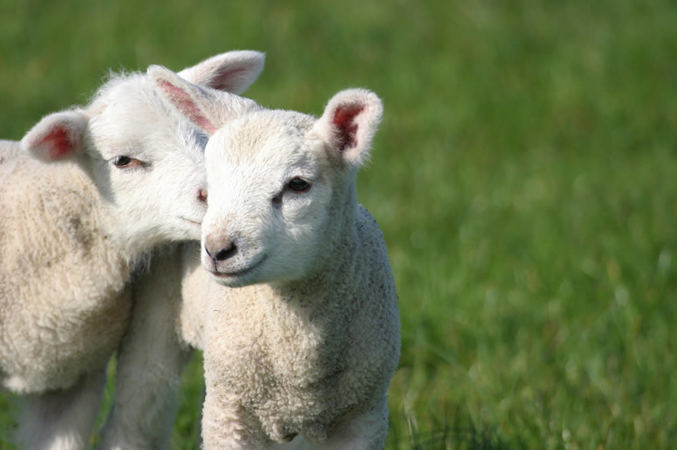Going to work on an egg may be out of fashion, but we do eat one egg approximately every other day. In total, the UK alone consumes over 30 million eggs per day.
High production values
The wild ancestor of modern day chickens, the red junglefowl, produces around a dozen eggs each year. Through decades of breeding, laying hens have been bred for very high production of eggs. Modern commercial hens produce a very high yield of around 300 eggs a year. Chickens will naturally live for 6 or more years but after 12 months of laying, the hen’s productivity will start to decline. This is when most commercial laying hens are slaughtered and replaced.
There are a number of welfare issues for egg laying hens.
Welfare issues for egg laying hens
Good animal welfare depends on three components:
- Physical well-being
- Mental well-being
- Natural living.
In intensive egg farming all three of these are compromised by periods of confinement in battery cages or "enriched" cages, health problems and beak trimming.
It is estimated that more than 60 percent of the world’s eggs are produced in industrial systems, mostly using barren battery cages.
Battery cages

While barren battery cages were banned in the EU in 2012, the majority of laying hens in the rest of the world remain confined within them. Each battery cage generally houses up to 10 birds. The average space allowance per bird in a typical battery cage is less than the size of an A4 sheet of paper, and the height is just enough to allow the hen to stand.
The cages usually have a sloping wire mesh floor and are kept in rows stacked in several tiers. Each shed typically houses tens of thousands of hens this way, and the largest sheds can contain more than a hundred thousand birds. Typically these buildings are artificially lit and ventilated. Caged hens may usually never experience natural light or fresh air and do not leave their cages until they are taken to slaughter.
Enriched cages
So called “enriched” cages were developed when barren battery cages were banned in the EU. They only provide more a small amount of extra space per bird (than compared to battery cages). They and can allow hens to express more of their natural behaviours, such as perching, dustbathing, and nesting.
However, the design of the cages means these behaviours are still very restricted. The perches are very low (just a few inches from the floor of the cage) so hens cannot fly up to a high perch to be safe from feather pecking, the litter area is often very limited, and effective dust bathing generally is not possible. The ‘nest’ consists of a plastic sheets hanging down from the top of the cage, which creates a more secluded area for egg laying.
Luxembourg has banned the use of enriched cages for laying hens, and Austria and Germany are phasing these out.

Brittle bones
Modern commercial hens have been bred to produce large numbers of eggs. This depletes the hen’s store of calcium and can result in high levels of osteoporosis (brittle bones) and fractures. Restricted movement can also contribute to osteoporosis.
Several tiers of crowded cages make inspection difficult, and in large cage sheds injured birds are often left to die unnoticed.
Feather pecking

Hens often lose a large proportion of their feathers due to damage from the sides of the cage and pecking from other hens. To prevent feather pecking, chicks often have part of their beaks cut off without anaesthetic. While beak trimming with a blade became illegal in the UK in 2011, this technique, along with beak trimming with a specialized infrared light, remains legal in the US. Infrared beak trimming may be less painful than blade trimming, although blade trimming is more common.
Salmonella
Even though it is often claimed that confined animals are better protected from infection, a survey by the European Food Safety Authority found that eggs produced in cages are more likely to be contaminated with Salmonella than those produced in cage-free systems.
There are alternative methods of egg production that do not require the hen to endure the suffering of cages.
Higher welfare alternatives for hens
In the UK, free-range systems are the most popular of the non-cage alternatives, accounting for around 50% of all eggs produced, compared to 4% in barns and 3% organic.
Barns and Aviaries

In barn systems, hens are kept in sheds using the floor space only, but those with several levels of platforms or perches are called aviaries. In Europe, the maximum stocking density is 9 hens per square metre.
This allows the hens much greater freedom of movement than is possible in cage systems. They can stretch, flap their wings and fly. They can also perform other natural behaviours such as pecking, scratching and laying their eggs in a nest.
Free-range and organic systems
Organic laying hens in the UK
In free-range systems, hens are housed in barns or aviaries but they also have constant daytime access to an outside range with vegetation. In the EU each hen must have at least 4 square metres of outside space (in non-rotational systems).
Organic systems also provide free-range access. Organic farms certified by the Soil Association, must provide additional space; each hen has a minimum of 10 square metres of outside space, and do not allow beak trimming. EU organic regulations limit stocking density inside the shed to 6 birds per square metre.

